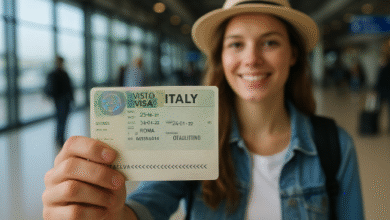What Teens Learn in WMST Behind-the-Wheel Training?

Hands-On Learning with Certified Instructors
In Washington, driver education requires:
- 30 hours of classroom instruction
- 6 hours of in-car behind-the-wheel training
- 1 hour of in-car observation
WMST delivers exactly that: six full hours behind the wheel with certified, patient instructors using DOL-approved vehicles—no simulators allowed.
Lessons begin in low-pressure environments and progressively introduce real-world driving, maximizing both skill building and confidence.
Key Skills Practiced During the Sessions
WMST’s in-car lessons are built on foundational and test-critical competencies:
- Vehicle setup and control (steering, braking, mirrors)
- Reference points and following distance, incorporating the 4-second rule for safe spacing
- Turns, intersections, and lane changes executed smoothly and with proper signaling
- Backs and parking maneuvers (e.g., backing around a corner and parallel)
- Highway driving, including merging and exiting
- Comprehensive Skills Test preparation built into the final lesson
Preparing for the 5 Required Maneuvers
WMST ensures full practice of the five maneuvers required by the WA Skills Test:
- Backing around a corner
- Parallel parking
- Hill parking (uphill/downhill)
- Lane change with proper signaling
- Entering and exiting traffic safely
These are systematically covered and refined from early lessons through intensive Skills Test rehearsal.
How WMST Goes Beyond the State Minimum
WMST exceeds standard requirements through:
- No substitutions—full six hours of real in-car time with skilled instructors
- Additional optional training for students who need more practice after the sixth lesson
- Providing an authorized vehicle at no extra charge for the Skills Test itself
- A DOL-approved curriculum designed for safety, test readiness, and long-term driving competence
How Lessons Build Long-Term Safety Awareness
Safety is embedded throughout:
- Proper techniques like turning and following distance become second nature
- Practice across differing road types and traffic helps teens anticipate and manage hazards
- Instructor feedback targets unsafe habits early—strengthening judgment and responsible driving behavior
This structured, safety-first approach ensures lasting improvements beyond the test.
Frequently Asked Questions (FAQs)
How many behind-the-wheel sessions are included?
Six sessions—plus one observation hour—as required by WA State law.
What does a typical WMST lesson include?
Lessons start with fundamental control and positioning, then move to hands-on practice of turns, parking, and merging, culminating in a Skills Test rehearsal.
Are lessons conducted in real traffic conditions?
Yes, lessons begin in low-risk environments and progress into real traffic settings once students demonstrate foundational control.
Does WMST offer additional practice if needed?
Yes. If a student requires more time after the six sessions, WMST offers extra lessons or private in-car instruction.
How is teen progress monitored during training?
Instructors track progress through hands-on evaluations, constructive feedback, and ensuring mastery of each maneuver before moving forward.
Conclusion: Equipping Teens to Drive Safely and Confidently
WMST’s behind-the-wheel training is more than just meeting licensing requirements—it’s about crafting safe, skilled, and confident drivers. By focusing on real-world driving, test-specific maneuvers, and comprehensive instructor support, WMST sets students on a path toward lifelong safe driving.
Ready to help your teen get behind the wheel with confidence? Visit WMST’s program page to enroll or learn more.


